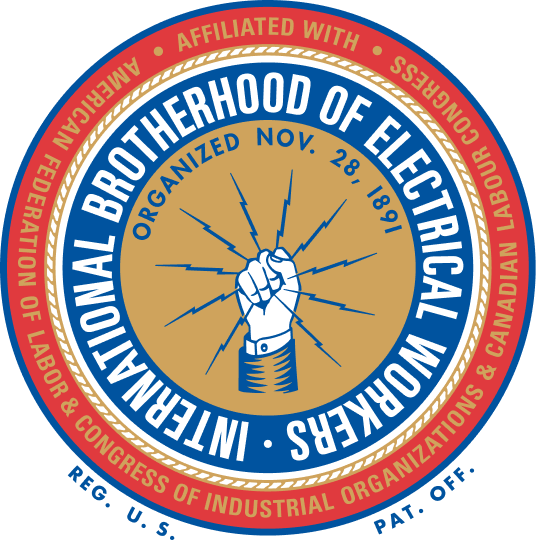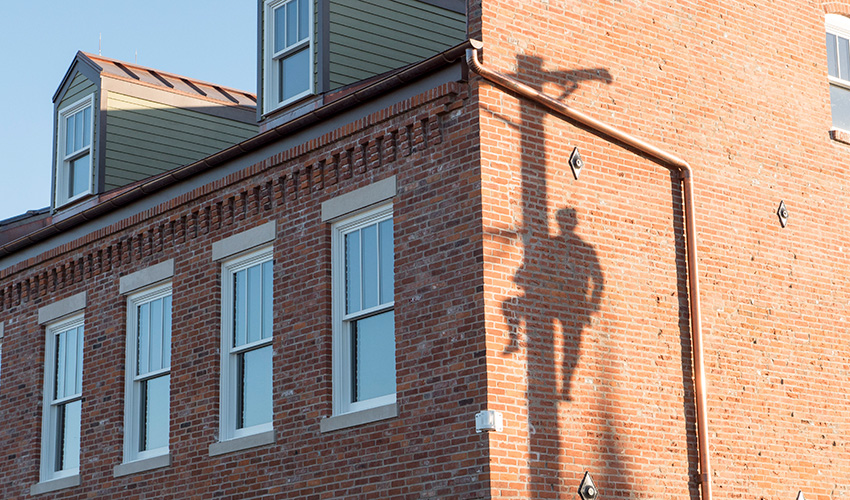In 1891, a traveling lineman, Henry Miller, organized the founding convention of what would become the International Brotherhood of Electrical Workers at the St. Louis boarding house he lived in at the time. Today, that boarding house houses the Henry Miller Museum honoring the IBEW’s founders and history.
More than a hundred years ago, a young lineman’s dream of a national union of electrical workers began to take shape. His dream became a reality in 1891 in St. Louis for the formation of the National Brotherhood of Electrical Workers. Its first president was a young lineman still in his early 30s, named Henry Miller, a widower, with no known family ties. Being a lineman was his life.
Traveling from city to city, sleeping in boarding houses, Miller organized electricians across the country, but despite his historical significance, little is known about Henry Miller’s tragically short life, which ended only four years after the formation of the union.
Born shortly before the Civil War, a child of German immigrants, Texas was Miller’s early home and it was a popular destination for German immigrants coming to America. In the middle of the 19th century, at an early age, he went to work as a waterboy helping to establish telegraph lines close to his home in Texas. Soon he was traveling the country working for any company needing skilled linemen for the expansion of the growing telegraph system in the country.
While working at the St Louis Exposition Hall in 1890, a group of local electricians recognized the need for a union and organizer. Miller later met with the group at Stoli’s Hall. It was there that the first St. Louis electricians union, AFL Federal Labor Union number 5221, was formed. Miller knew that the new local had to go national to grow and to thrive. By 1891, Miller was convinced that a national union of electrical workers was the key to better pay and working conditions. He brought together delegates from other locals around the midwest who all agreed that a national electrician union was essential. The NBEW was founded in the St. Louis boarding house where Miller was living. That building still stands today.
The dream of restoring the building where the IBEW was founded began to take shape in 2014 as the IBEW was in early stages of planning to return to St. Louis for its 125th anniversary convention in 2016.
After learning of the existence of the former boarding house in the video embedded above, leaders of IBEW Local 1 moved to purchase the property and an adjacent lot, which they were able to secure through a 3rd party. Fundraising began at the behest of then-International President Ed Hill, and local unions from across the country began contributing to the project, with the sale officially closing in June 2015 after confirmation that the building was structurally sound and could be turned into a museum.
The Electrical Workers Historical Society was set up to manage donations and governance of the project, and work began in earnest to restore the crumbling building to a habitable space. Using union labor, including generous donations from St. Louis-area signatory contractors, the building was faithfully restored in time for a grand opening in September 2016.
Then-International President Lonnie Stephenson and then-International Secretary-Treasurer Sam Chilia cut the ribbon to open the Henry Miller Museum on September 15, 2016. It has hosted thousands of IBEW members from across North America since.
The Electrical Workers Historical Society is a 501(c)(3) nonprofit organization run in conjunction with the IBEW that maintains and operates the Henry Miller Museum today.
Through the generous donations of local unions and IBEW members across North America, the Society has raised more than $4 million of the $6 million renovation budget as well as funds to maintain and run the museum in perpetuity.
Contributions are still needed and welcome, and memorabilia and naming opportunities remain available.
Tools and Resources for Local Unions
(Login Required)
Your Resource for IBEW News
Find a Local Union
Show Your IBEW Pride.
Visit our Store.



International Brotherhood of Electrical Workers
Copyright © 2025 IBEW. All rights reserved | Terms & Conditions | Privacy Policy



The Henry Miller Museum is supported entirely by donations to The Electrical Workers Historical Society, a 501(c)(3) tax-exempt organization. Donations made after Oct. 2, 2015 are entirely tax deductible.
Donations can be made by mail, phone or email:
In recognition of your generosity, the following items are available as gifts and/or sponsorship opportunities within Henry Miller Museum:
$25 Donation – Certificate of Appreciation
A certificate of appreciation with an architectural sketch of the Henry Miller Museum building
$30 Donation – Museum T-shirt
100% union-made in the U.S.A. T-shirt with an image of the IBEW’s founding fathers. Available in sizes up to 4X and multiple colors.
$100 Donation – Cast Metal Coin
$250 Donation – Copper Cast Coin
The Electrical Workers Historical Society is casting commemorative coins with the boarding house on one size and the original hand-drawn NBEW emblem on the reverse.
$1,000 Donation – 8″ x 8″ Personalized Brick
Have a brick personalized to commemorate your family or local union. The bricks will be located in Founders’ Park, adjacent to the Museum.
$5,000 Donation – 24″ x 24″ Personalized Paver
Stone pavers will be placed throughout the courtyard. These stone pavers will stand out, as will your message.
$5,000 Donation – Founder’s Park Antique Streetlight
Antique street lights, manufactured by our sisters and brother fro IBEW Local 1710 in El Monte, CA, will illuminate Founders’ Park and feature a prominent dedication plaque commemorating the donor.
$10,000 Donation – Custom Stainless Steel Fence Emblem
A custom-engraved emblem will adorn a section of the fence separating the property from the street.
$10,000 Donation – Brick and Stone Column with Medallion
Limited columns remain along the front span of the museum for local union or individual sponsorship.
$25,000 Donation – Customized Granite Bench
Sponsor a bench in Founders’ Park for your local union or affiliated organization.
$100,000 Donation – Museum Floor Sponsor
An opportunity remains to sponsor an entire floor of the Henry Miller Museum. Contact us to discuss details.
$100,000 Donation Opportunities Remaining:
J.T. Kelly’s Printing Office:
In 1893, J.T. Kelly would publish the first Electrical Worker newspaper at #14 Emilie Street in downtown St. Louis. Adjacent to our founding father’s bedroom, the Society plans to recreate founding Secretary-Treasurer J.T. Kelly’s first publishing office.
Third Level Labor Library:
The top level of the Henry Miller Museum is being allocated as a solemn place to research our history. Contact us to inquire about sponsoring this space.